Media | Articles
Jaguar’s XJ220 is on the prowl, and this 16-mile example is going for the kill
Could you refrain from driving a Jaguar XJ220 if it were in your garage? Clearly, the three owners of this 1993 model managed just that, accruing just 16 miles since it rolled out of the Wykham Mill factory—opened by Princess Diana—near Banbury.
The British-built supercar was built for speed. Even its name hinted at its potential—220 mph, causing a stir at the time of its launch. And it lived up to the hype, holding the record as the world’s fastest production car, with an independently verified top speed of 217 mph, a record that was later broken by the lighter, more expensive and more powerful McLaren F1 (240 mph, in case you need reminding).
It suggests this unregistered, barely driven model—with 16 miles on the clock, its engine, gearbox and other major mechanical components are not yet run-in—was set aside from the first day of ownership, perhaps as a work of art, or perhaps as a speculative purchase that was hoped to rise in value.
It is car number 223 of fewer than 300 made and is being sold by Canepa, a California-based classic car and motorsport specialist. Prospective buyers will need to contact Canepa to discuss the price, but there is little doubt it will cost more than £500,000 (~$652,000), given that a 703-mile XJ220 sold for a world record price of £525,000 ($687,000) in March.
Canepa’s left-hand-drive example, finished in the rare Silverstone Green body color, was ordered new by Hartmut Flöter, a former Kawasaki motorcycle distributor in Sweden. Built in October of 1993, and delivered by late January of 1994, it was put on display for 17 years before another collector had a brief stint of ownership. By 2016, it was in the hands of its third owner, a German, who kept it in long-term storage; Bruce Canepa, Canepa founder, bought and imported the XJ220 to the United States late last year.
Marketplace
Buy and sell classics with confidence
The company claims that the big cat needed only a gentle clean before being retailed but has not released any more details of its service record. A handbook, tool kit, spare parts, and service manuals are also included in the sale.
Build records for the XJ220 vary; some sources quote 275 units constructed between 1992 and 1994, others state 281 or 283 cars, including the nine 220Cs modified by TWR to compete in GT racing, six of which became 220S road cars.
Barely used examples of the XJ220 are common within the collector car community, such is the scarcity of spare parts, although Staffordshire-based Jaguar specialist, Don Law Racing, builds, maintains and improves the model, and Bridgestone brought back a new compound tire to support XJ220 owners in 2020 after its Expedia S-01 was long since retired.
Even so, this XJ220 sale marks a watershed moment. Values have shot up in the last two years, rising 27 percent since the beginning of 2020 with #1 (Concours) condition cars topping out at $682,000 as of this writing. Their upward trajectory has been spurred by several high-profile sales, including another pristine example whose $599,597 result at Bonhams’ 2021 Goodwood Revival sale set a record. It didn’t stand long. RM Sotheby’s sold this 1993 example for $687,000 only last month at The Amelia. Both of these cars were low-mileage (400 and 703, respectively) with regular and recent servicing by marque expert Don Law Racing.
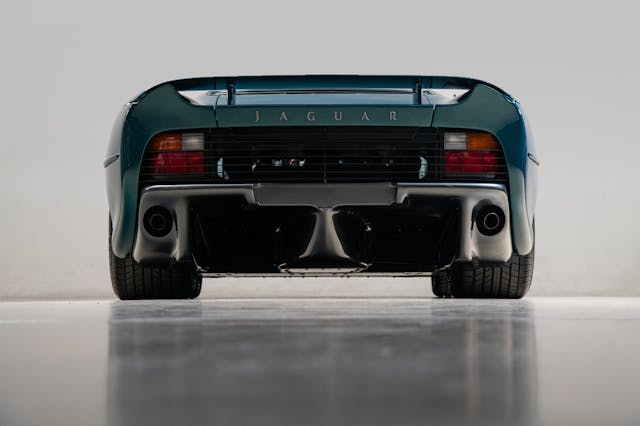
“This one is a bit different,” says John Mayhead, editor of the U.K.-specific Hagerty Price Guide. “Its ultra-low mileage is what differentiates it from others, and in the past we’ve seen such cars of all different makes fetch very large sums. However, if they are used at all, their uniqueness evaporates. That means they are traded like commodities or artwork rather than cars. If a buyer wanted to drive this car, then it would probably cost a great deal to recommission. Time will tell if the market is ready for an XJ220 as a piece of art.”
Values of the XJ220 have been steadily increasing after a life in the doldrums; born into a recession in 1992, buyers who flooded Jaguar’s stand at the 1988 Birmingham Motor Show with blank cheques claimed the eventual production car was “watered down” from the specification of the original show vehicle.
The car did indeed differ markedly from the 1988 concept car, which featured all-wheel-drive and a V-12 engine. Ford’s purchase of Jaguar in 1989, the cancellation of the stylistically similar XJ41/42 F-type program and a change in motorsport homologation rules for the class in which the original car would have competed led to delays and significant design changes.
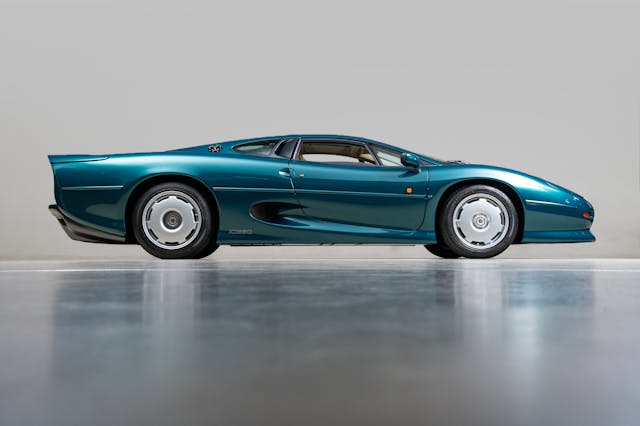
The concept conceived by Jim Randle’s “Saturday Club” (Randle was Jaguar’s head of product development, who ran secret vehicle development projects on Saturdays with trusted engineers and suppliers) lost its historic 6.2-liter V-12 and FF Developments all-wheel-drive system, receiving a reworked version of the Williams V64V V-6 used in the MG Metro 6R4. Twin-turbocharged, with a rear-wheel-drive drivetrain, the 1992 production XJ220 boasted 535 hp.
Litigation ensued after many buyers, having handed over a £57,000 deposit, tried to cancel their order, leaving 22 of the original production run unsold. In fact, a 1998 Top Gear segment reported that leftover XJ220 stock, all left-hand drive, could be bought for £150,000, a considerable discount on the £415,000 list price.
It’s safe to say that collectors are enviously recalling those days. Though it once lurked in the shadows, the XJ220 is enjoying its time in the sun.

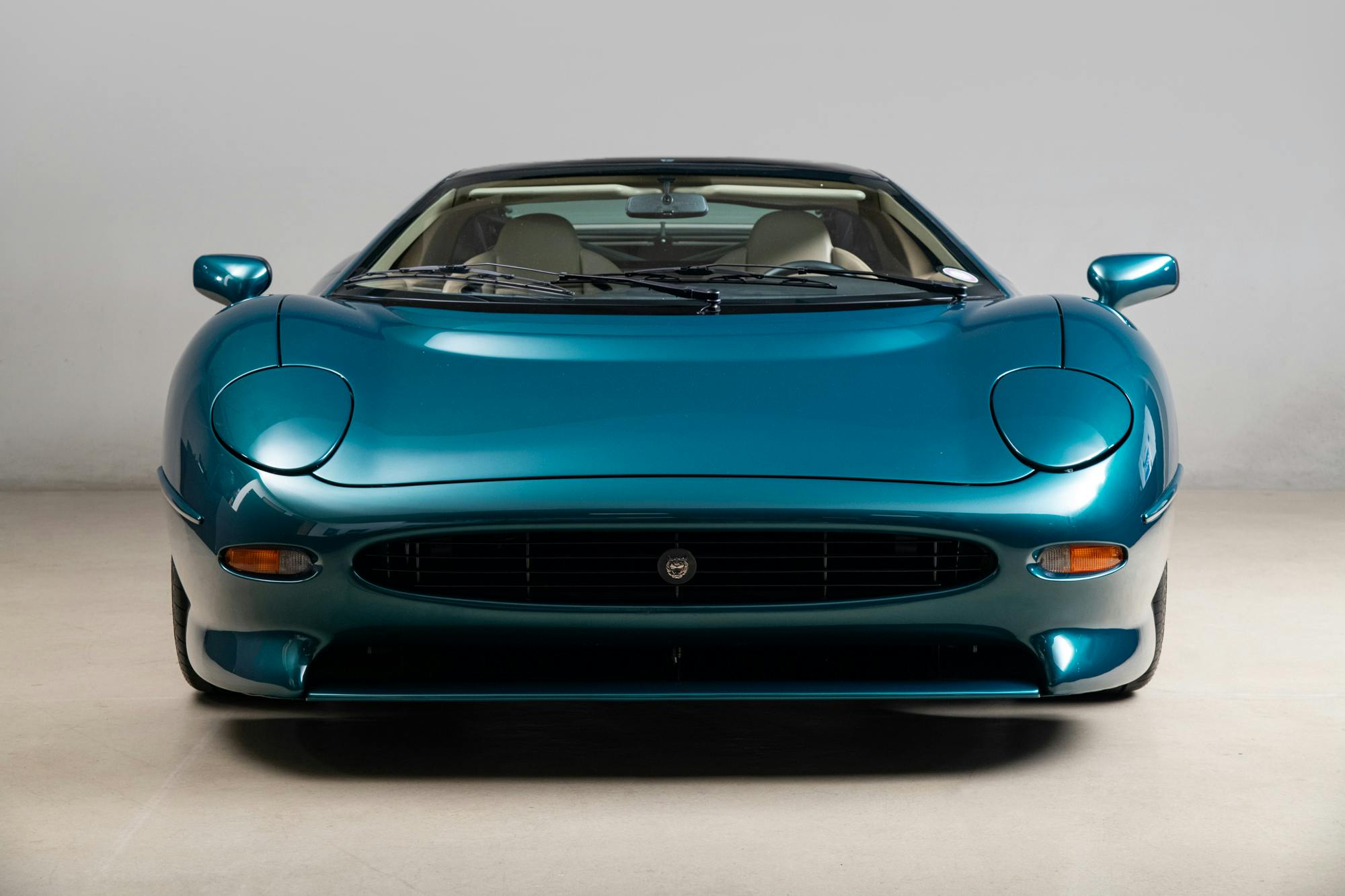
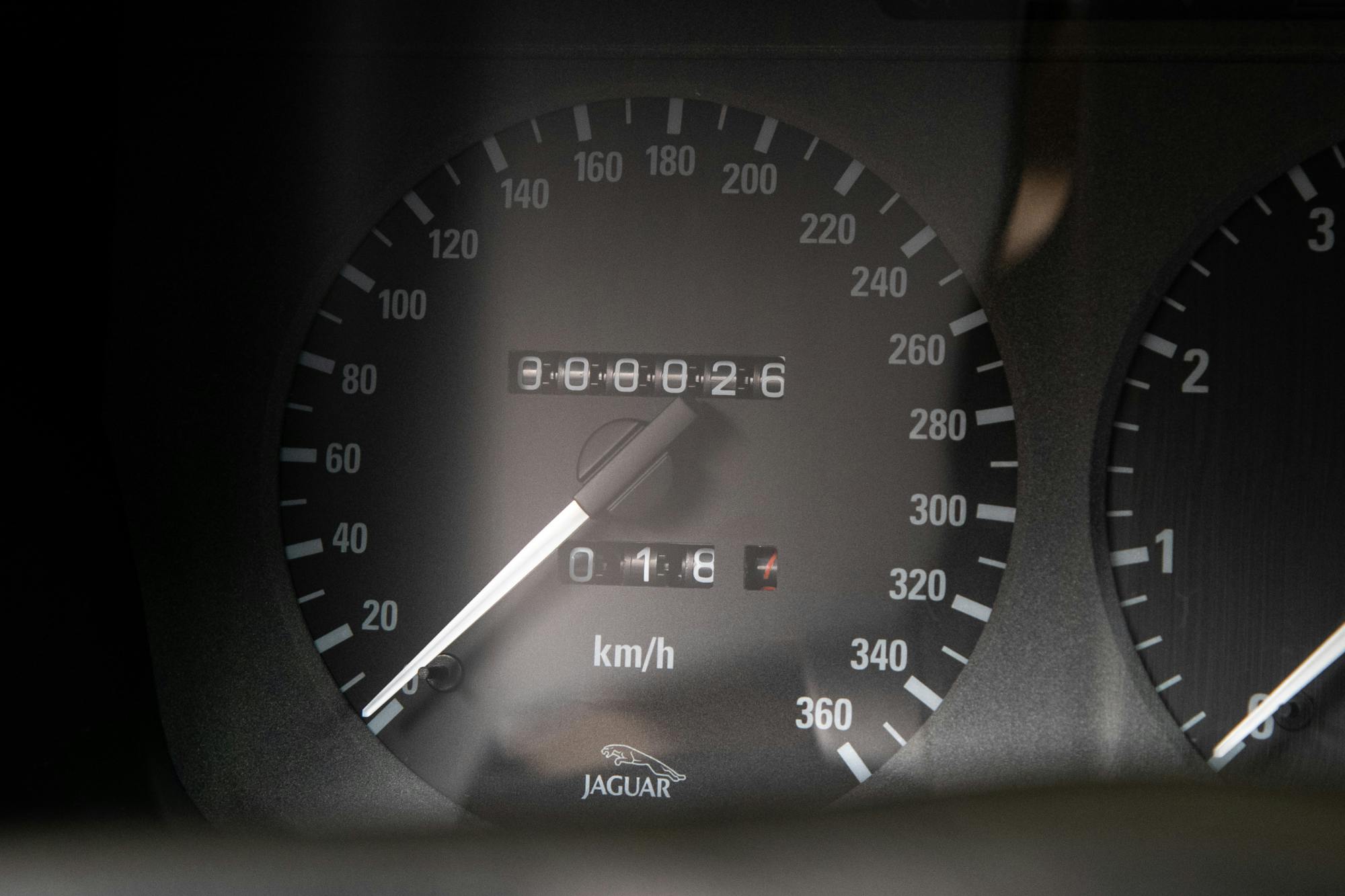









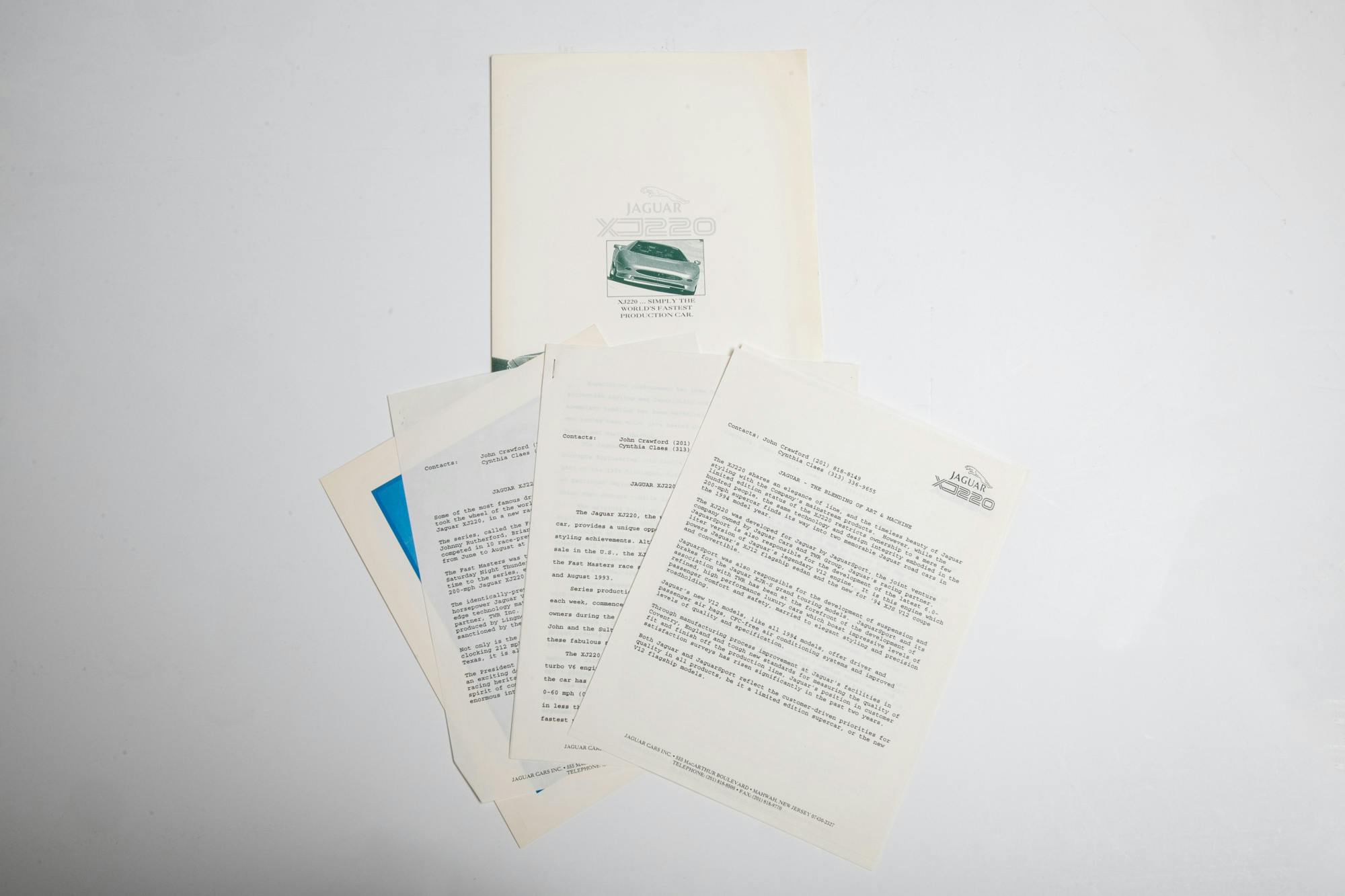
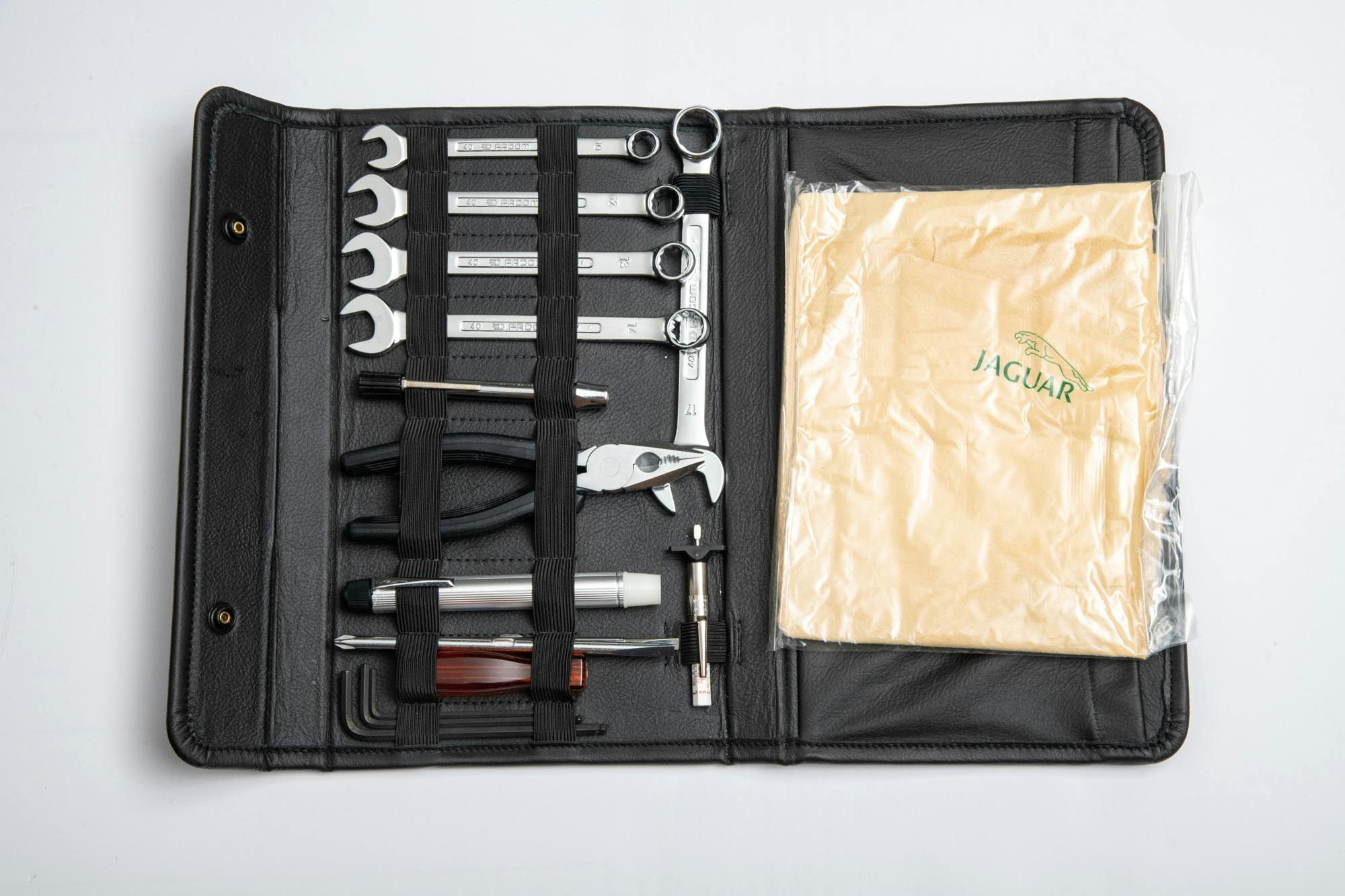
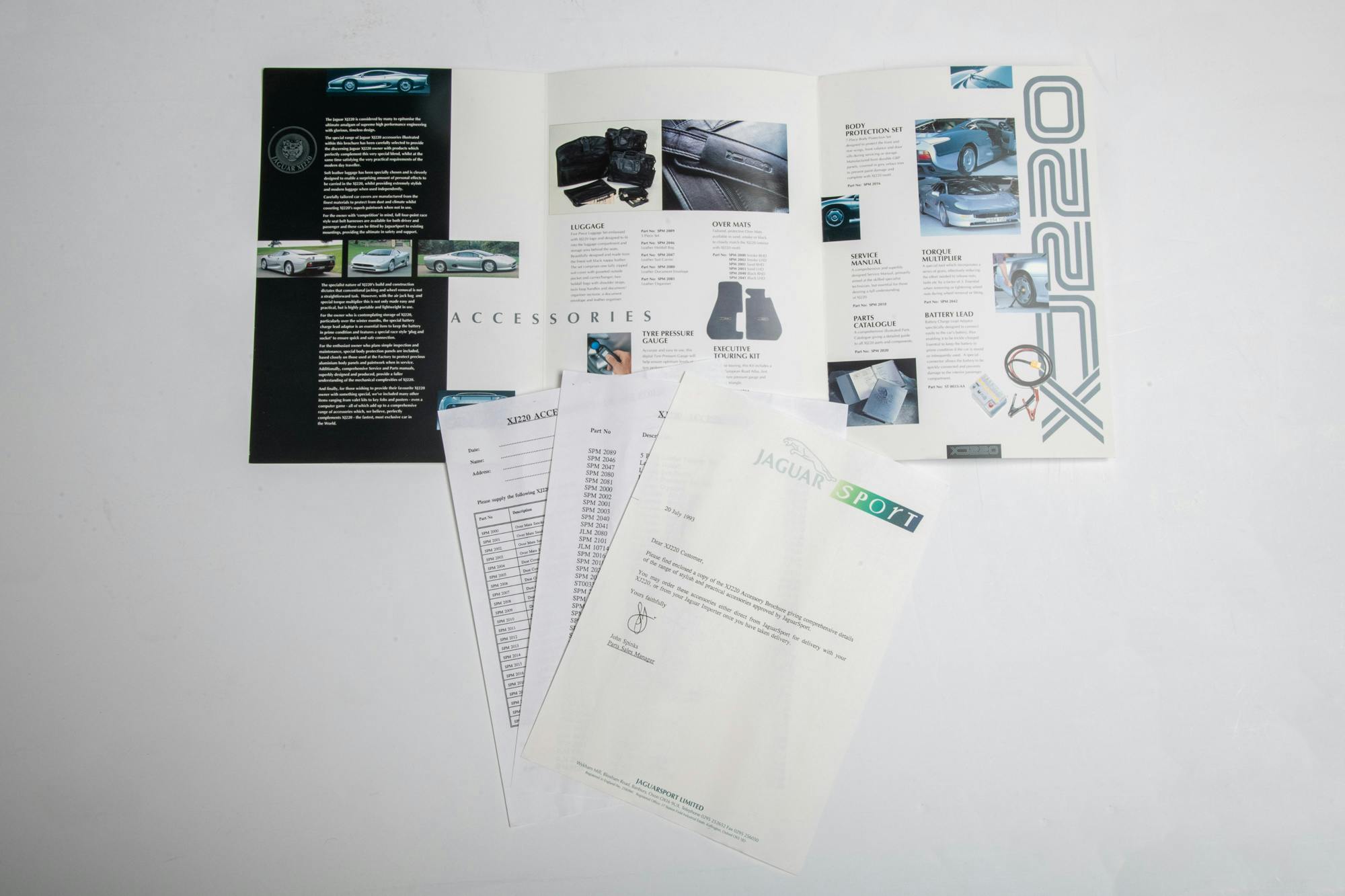
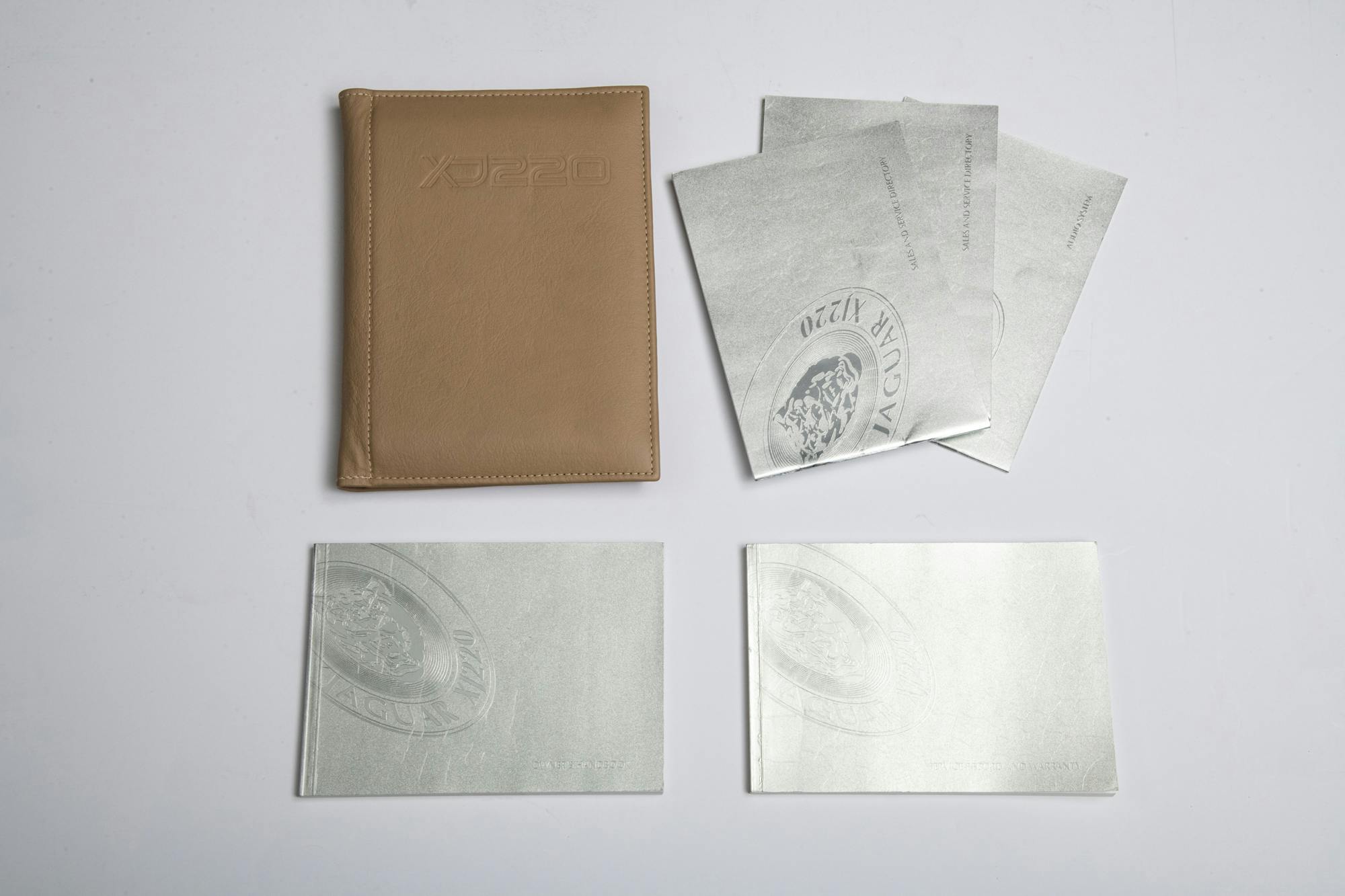

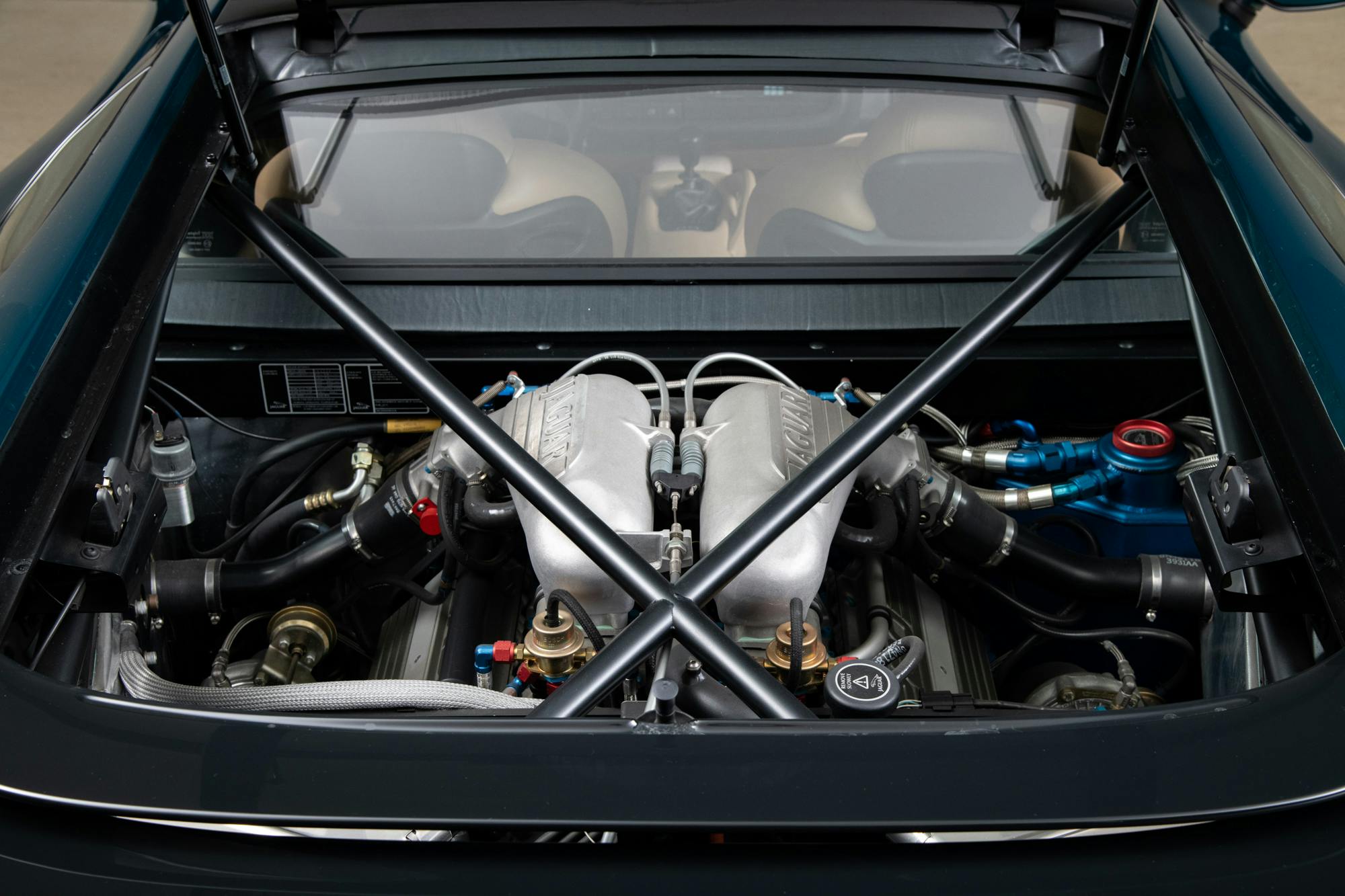
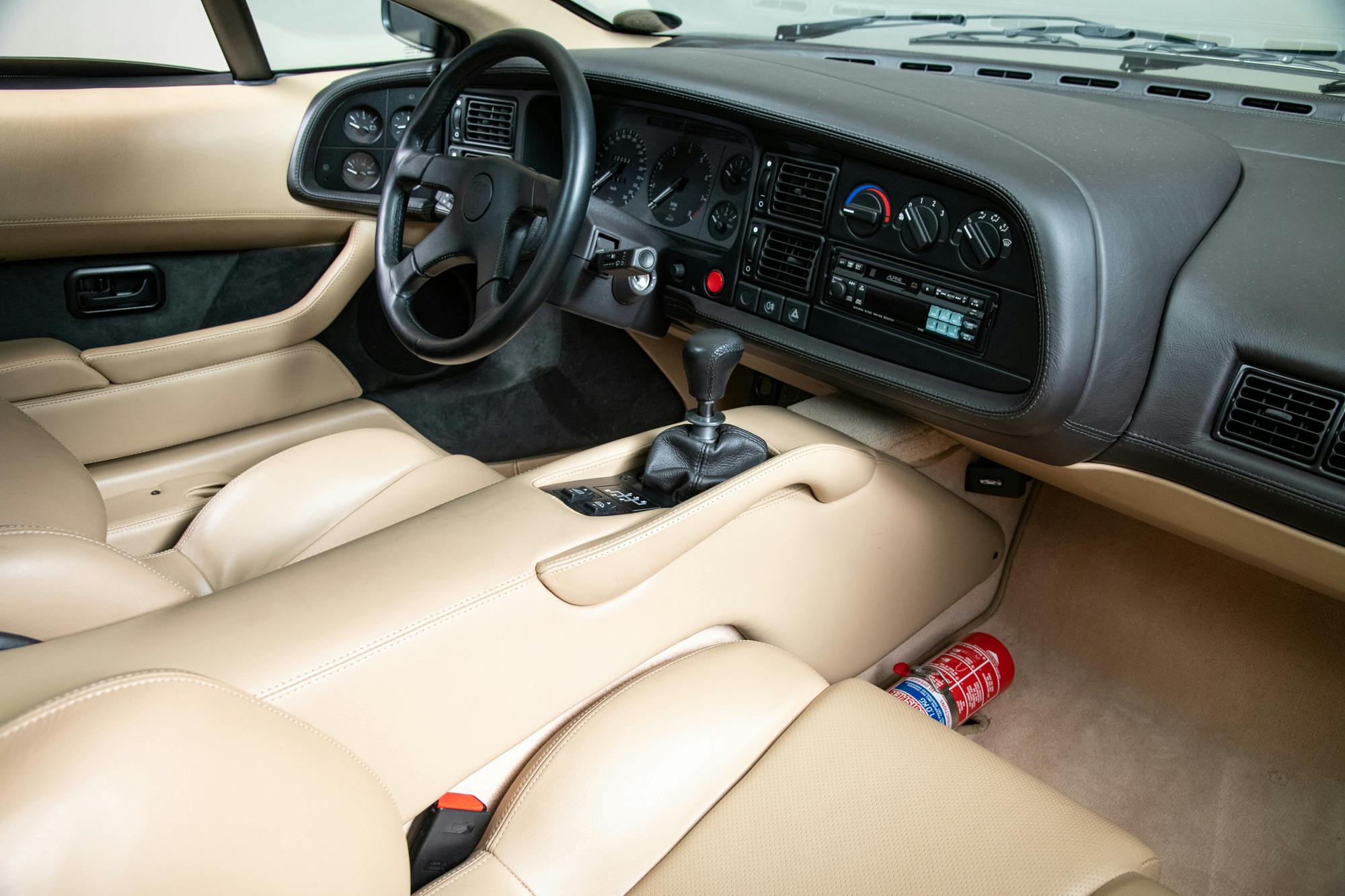
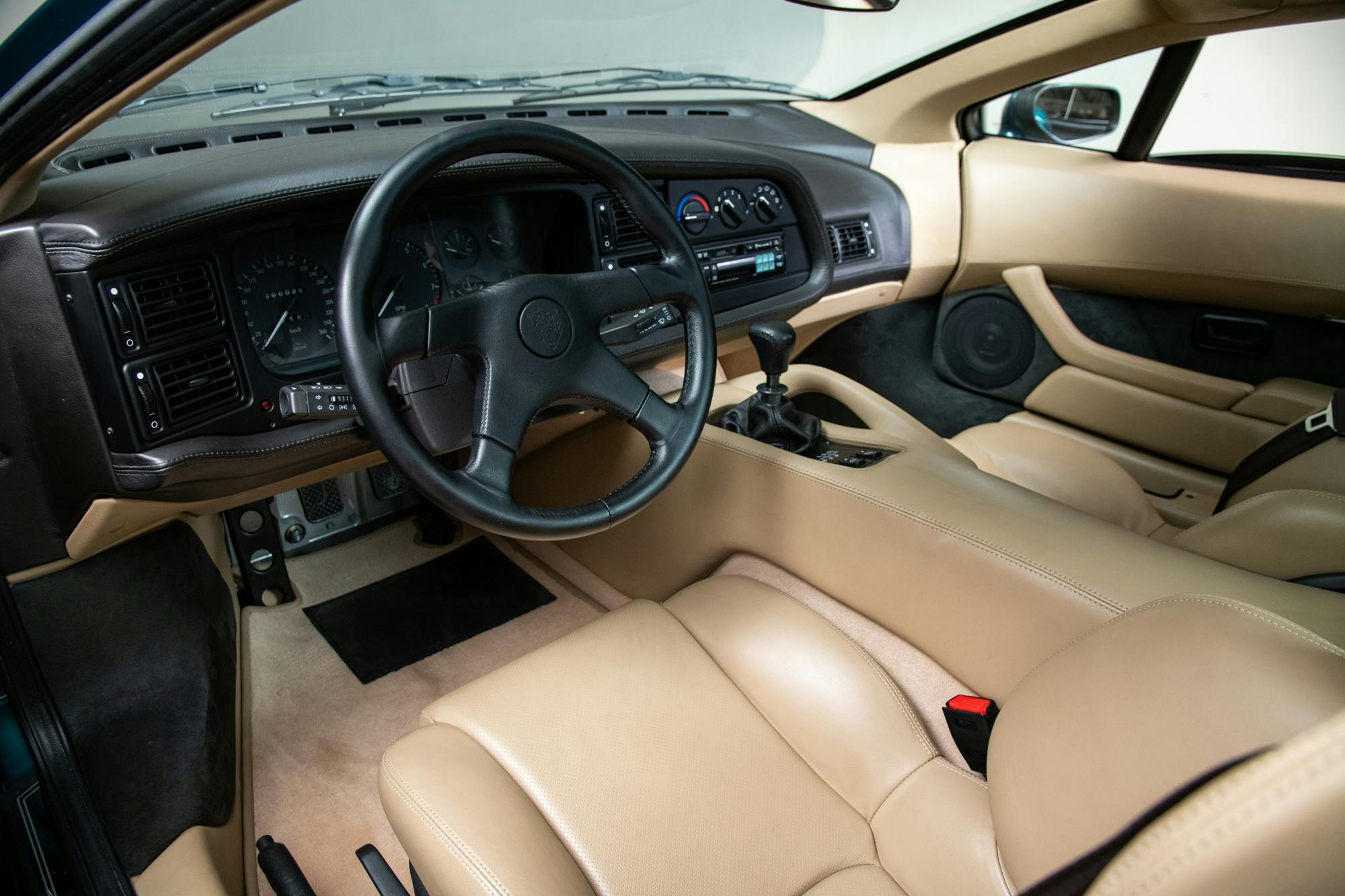
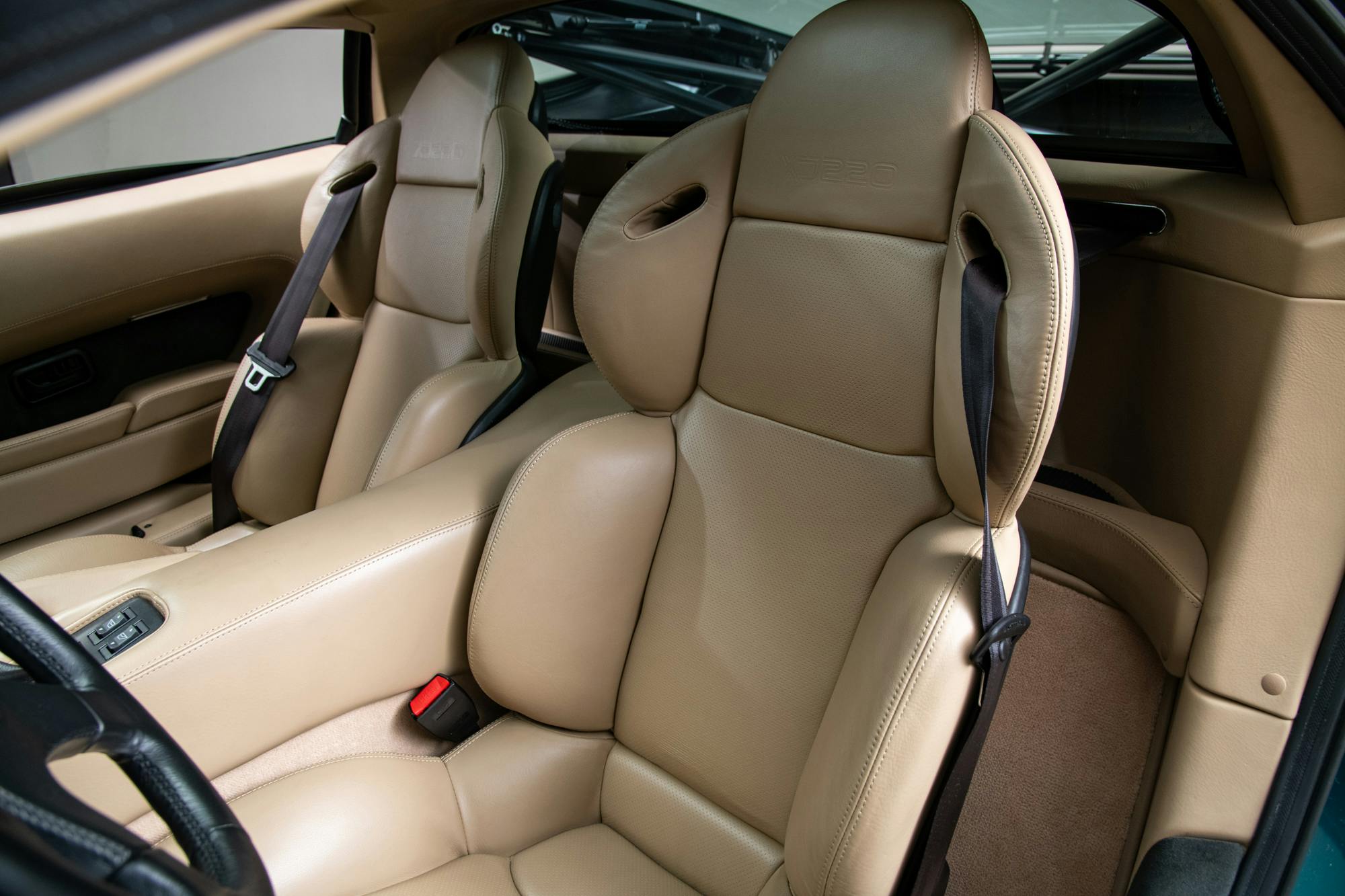
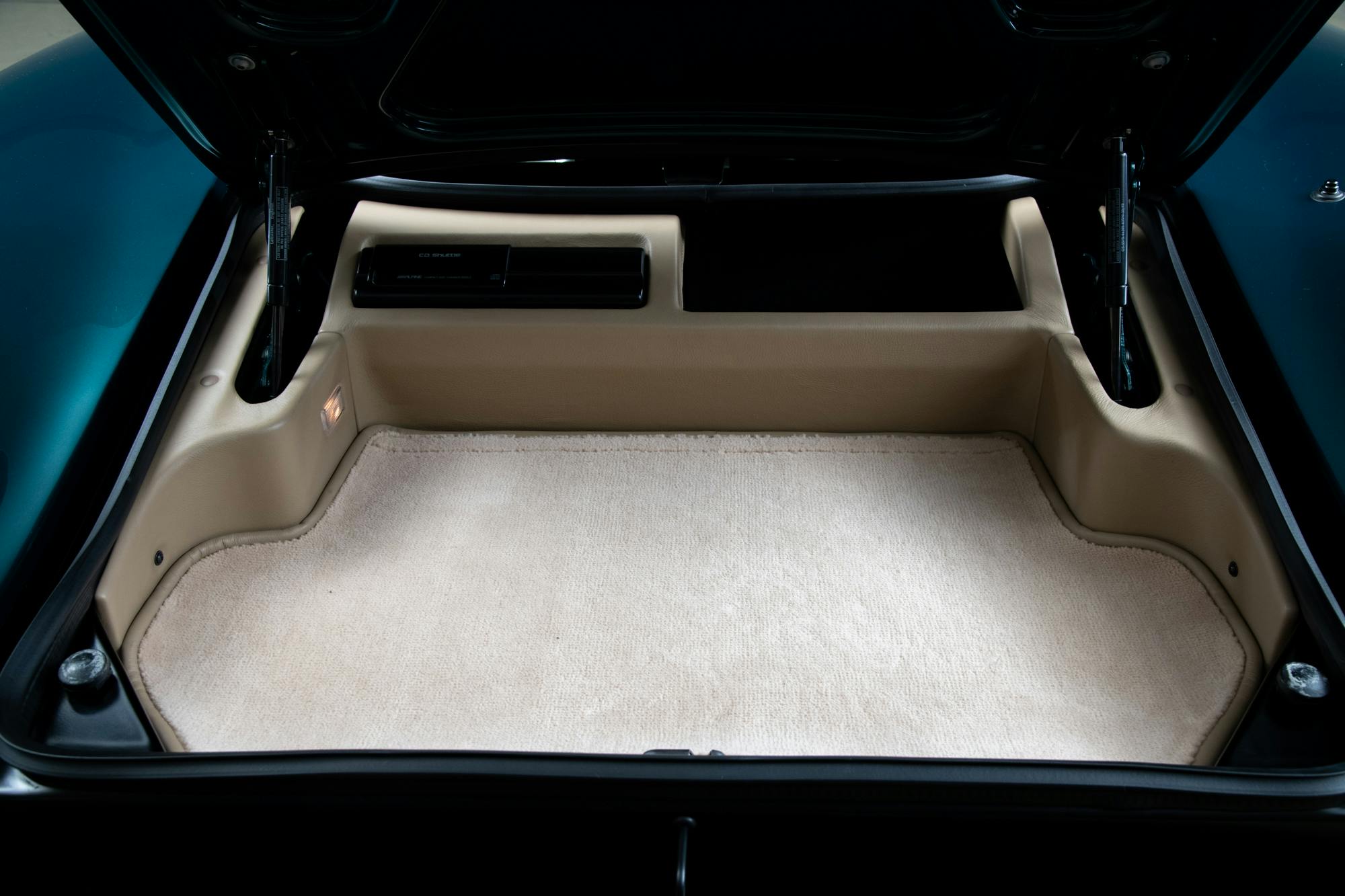


















I don’t know how anyone can resist driving an XJ220. I’ve owned one since 1999 and it has 21,600 miles on the odometer. Driving an XJ220 is thrilling and very addictive.